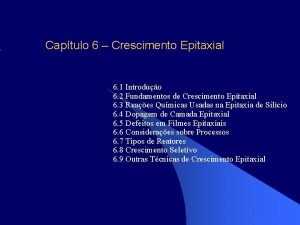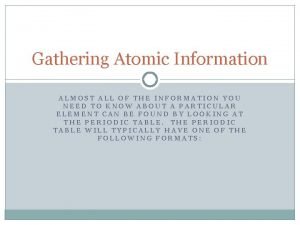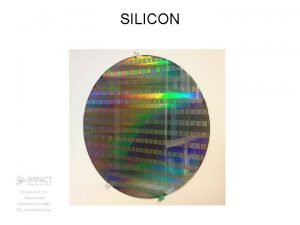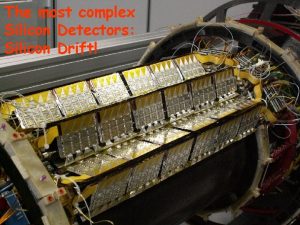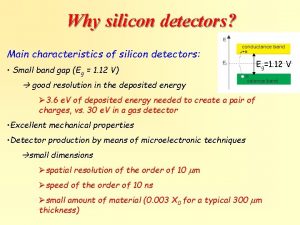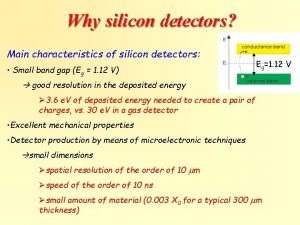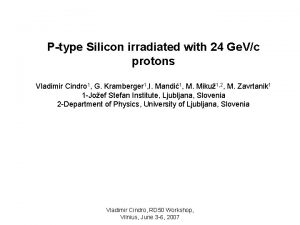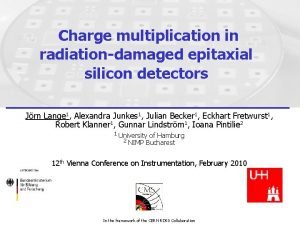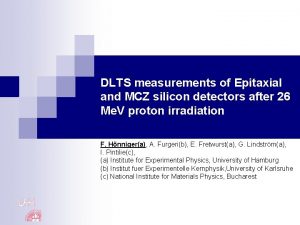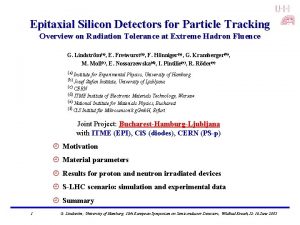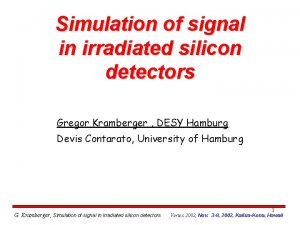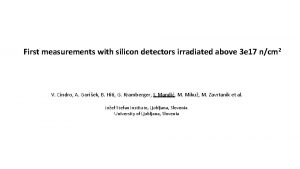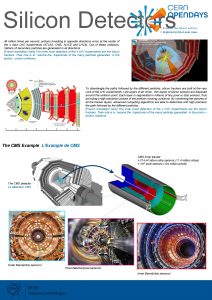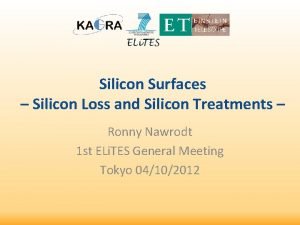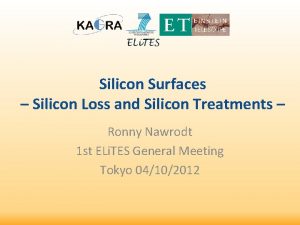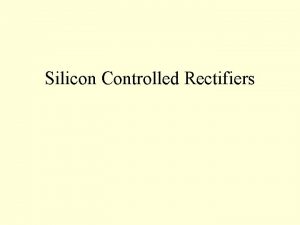RD 50 Epitaxial silicon detectors irradiated with protons


















- Slides: 18

RD 50 Epitaxial silicon detectors irradiated with protons and neutrons Katharina Kaska, Michael Moll RD 50 Workshop CERN 12. 11. 2007 RD 50 Workhop: CERN 12. 11. 07 Katharina Kaska

RD 50 • • • Wafers Produced by ITME (Institute of Electronic Materials Technology, Warzawa, Poland) – 100 mm wafer n-type silicon – Epi-layer: 150 mm, <111>, P-doped, ~500 Wcm – Substrate: 525 mm, <111>, Sb-doped, 0. 015 Wcm p-type silicon – Epi-layer: 150 mm, <111>, P-doped, ~1000 Wcm – Substrate: 525 mm, <111>, B-doped, 0. 015 Wcm RD 50 Workhop: CERN 12. 11. 07 Katharina Kaska

RD 50 • • • Detectors used 0. 5 cm HIP-004 -C – Produced by Helsinki Institute of Physics, Helsinki, Finland – Size 0. 25 x 0. 25 cm 2, thickness 150 um – n-type – Depletion voltage (CV) before irradiation: Vdep = 147. 4 + 3. 6 V CNM-11 – Produced by Centro National de Microelectronics, Barcelona, Spain – Size 0. 5 x 0. 5 cm 2, thickness 150 um – n-type – Depletion voltage (CV) before irradiation: Vdep = 154. 6 + 7. 5 V CNM-22 – Size 0. 5 x 0. 5 cm 2, thickness 150 um 0. 5 cm – p-type – Depletion voltage (CV) before irradiation: Vdep = 213. 7 + 12. 7 V RD 50 Workhop: CERN 12. 11. 07 Katharina Kaska

RD 50 Experimental procedure • Irradiation – 1 Me. V neutrons in Ljubljana – 24 Ge. V/c protons at CERN • Annealing – 4 minutes at 80 C • CV/IV – Measured at room temperature in parallel mode at 10 k. Hz • CCE – NIKHEF setup RD 50 Workhop: CERN 12. 11. 07 Katharina Kaska

RD 50 Depletion voltage (CV) Preliminary! RD 50 Workhop: CERN 12. 11. 07 Katharina Kaska

RD 50 Workhop: CERN 12. 11. 07 Leakage current Katharina Kaska

RD 50 NIKHEF setup by Fred Hartjes signal shaping time: 2. 5 µs guard ring connected to ground RD 50 Workhop: CERN 12. 11. 07 CCE setup Temperature control: - internal cooling with peltier - whole box can be put into freezer Temperature measurement: - directly on sample board - in box with additional humidity sensor Katharina Kaska

Sample mounting RD 50 • Detector glued on board with silver glue • Guard ring connected to ground RD 50 Workhop: CERN 12. 11. 07 Katharina Kaska

RD 50 CCE measurements • all detectors were measured at -20± 1 C (only external cooling) • humidity in the box was 18 -30% (flushed with dry nitrogen) • Repeated gain measurements showed a gain of 247 e-/m. V for these conditions RD 50 Workhop: CERN 12. 11. 07 Katharina Kaska

RD 50 Data fitting Example: CNM-11 -01 (n-type) irradiation: Φ= 1× 1014 p/cm 2 bias: 80 V temperature: -21 o. C Noise/pedestal measurement for each bias point => values used for deconvoluted landau distribution RD 50 Workhop: CERN 12. 11. 07 Katharina Kaska

RD 50 • • Reproducibility Detector was taken out of the setup and remounted between measurements Temperature and humidity were approximately the same RD 50 Workhop: CERN 12. 11. 07 • • • Katharina Kaska Different detectors, same fluence Temperature and humidity were approximately the same 3 -4 % difference over depletion

RD 50 • • What can go wrong The same detector was first measured fixed to the board with carbon adhesive tabs, then removed from the board and fixed with silver glue. The environmental conditions were approximately the same for both measurements (- 21 C, 20%). 8 -10% difference over depletion We didn’t investigate the problem further (CV, IV…) and abandoned the carbon adhesive tabs. RD 50 Workhop: CERN 12. 11. 07 Katharina Kaska

RD 50 Workhop: CERN 12. 11. 07 CCE neutrons Katharina Kaska

RD 50 Workhop: CERN 12. 11. 07 CCE protons Katharina Kaska

RD 50 CCE over depletion Preliminary! RD 50 Workhop: CERN 12. 11. 07 Katharina Kaska

RD 50 CCE over depletion Preliminary! @ 300 V RD 50 Workhop: CERN 12. 11. 07 Katharina Kaska

RD 50 Summary and outlook Summary • • • Increase of depletion voltage different for different manufacturers Increase of depletion voltage faster for proton irradiation Unusual drop in CCE at low fluences, for both neutron and proton irradiation Outlook • • Finish the measurements for the proton irradiated series and add a few more fluence points between 5 x 1014 p/cm 2 and 3 x 1015 p/cm 2 A set of detectors was already irradiated with protons at fluences between 1 x 1012 p/cm 2 and 1 x 1013 p/cm 2 to investigate the drop in the CCE further RD 50 Workhop: CERN 12. 11. 07 Katharina Kaska

RD 50 Carbon adhesive tabs RD 50 Workhop: CERN 12. 11. 07 Katharina Kaska
 Crescimento epitaxial
Crescimento epitaxial Applications of nuclear chemistry
Applications of nuclear chemistry Irradiated food symbol
Irradiated food symbol Giant gravitational wave detectors hear murmurs
Giant gravitational wave detectors hear murmurs Nuclear detectors
Nuclear detectors Feature detectors
Feature detectors Streaming potential
Streaming potential Where are feature detectors located
Where are feature detectors located Hplc detector types
Hplc detector types Frontier detectors for frontier physics
Frontier detectors for frontier physics Vhv voltage detectors
Vhv voltage detectors Feature detectors ap psychology
Feature detectors ap psychology Yodsawalai chodpathumwan
Yodsawalai chodpathumwan Photo detectors
Photo detectors Giant wave detectors murmurs universe
Giant wave detectors murmurs universe Rhmd: evasion-resilient hardware malware detectors
Rhmd: evasion-resilient hardware malware detectors Photo detectors
Photo detectors Number of protons in hydrogen
Number of protons in hydrogen Lithium protons neutrons electrons
Lithium protons neutrons electrons
